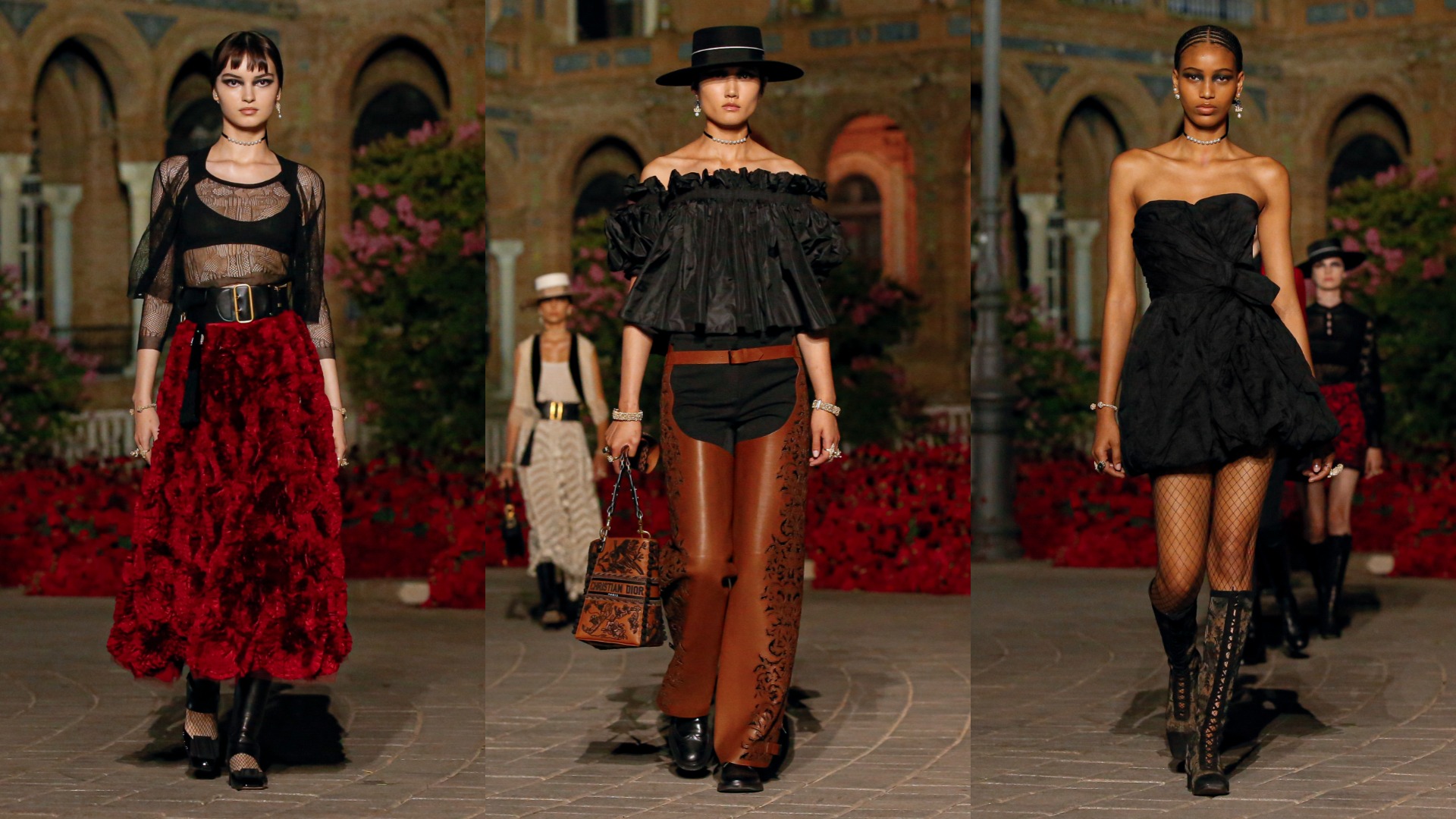Spain is hardly known for fashion, is it? Of course, Cristóbal Balenciaga was one of the masters of twentieth-century haute couture — but today, the country’s most famous sartorial output is Zara. Paris, I think it’s fair to say, it is not. Instead, the answer to Spain’s sartorial legacy is distinctly in the past: the ruffles of flamenco dresses, the ostentation of matador jackets, the frogging of boxy equestrian traje coto tailoring, and the rhythmic fringing of Manila shawls and flirtatious snaps of handheld fans. For Dior’s latest travelling show, Cruise 2023, Maria Grazia Chiuri took the quintessentially Parisian house to Seville, the old Andalusian capital known for its North African influences and… oranges! The result was a show that showcased the best of what the country has to offer, from dance to music, and yes, even clothes.
The show was held late last night (much cooler than the 45-degree daylight) in front of the majestic Plaza d’Espana, built in 1929 from a dazzling display of colourful ceramic tiles. A local orchestra was led by composer Alberto Iglesias, who has worked closely with Pedro Almodóvar since 1995, and went between traditional flamenco music and modern-day Rosalía bangers. Amid thousands of red roses strewn across maypoles, a troupe of flamenco dancers in diaphanous red dresses, exactly like that dancing-woman emoji, were led by local gypsy dancers who furiously click-clacked their heels faster than anything you could imagine. Music, dance, dressing up, colourful plates of Iberico ham being passed around… “I wanted it to feel like a fiesta,” explained Maria Grazia. “I think that handmade fashion is a bit like performing art, so why not mix different types of art together?”
Her collection, too, was a celebration of all things as-Spanish-as-castanets. There was plenty of ripe-tomato red, of course, the colour of Almodóvar lips and flamenco dancers; chiaroscuro Goya-black taffeta skirts; Esmeralda-like gypsy blouses and sweeping skirts; ecclestiastal gold and silver embroidery; locally made wide-brimmed straw-and-felt hats by Stephen Jones; and equestrian leather chaps with intricate fretwork cutouts and boxy jackets with tasselled frogging, borrowed from Andalusia’s traditional dressage riders and peacocking matadors. Backstage, MGC’s mood board was a visual encyclopaedia of all things española – dramatically dark Velasquez and Goya paintings; local Madonna statues in embroidered finery; old images of the fabulously wealthy Duchess of Alba; as well as the famous flamenco dancer Carmen Amaya who wore men’s suits instead of ruffled red dresses. Given that this is a cruise show, there were also plenty of photos of Dior’s original cabine of models who jetted around the world in the nascent days of travelling cruise shows and a globalised fashion system.
The idea of “nomadic, travelling objects” was important for Maria Grazia, who regularly travels the world in search of local handcrafts and is steadily building a global network of craftspeople to offer a platform to, chez Dior. The Manila shawl that opened the show, for instance, is “an accessory that you think is 100 percent Spanish,” as she points out. “But in fact, if you start even with its name, you realise it’s from Manila in the Philippines — and in fact is a piece of needlework craftsmanship from that was produced in China, then exported via the ports of Manila, and then through Mexico through Acapulco, and then eventually arriving in Spain.” It’s a complex history that speaks to the realities of what is deemed as European fashion and what is considered “ethnic”, and the way that cultures, and therefore fashion, have been shaped by historical colonialism and trade routes. “The object is moving like people, so it’s very difficult to to understand where the reference can come from,” Maria Grazia adds. “It’s hard to speak about tradition, because whose tradition is it?”
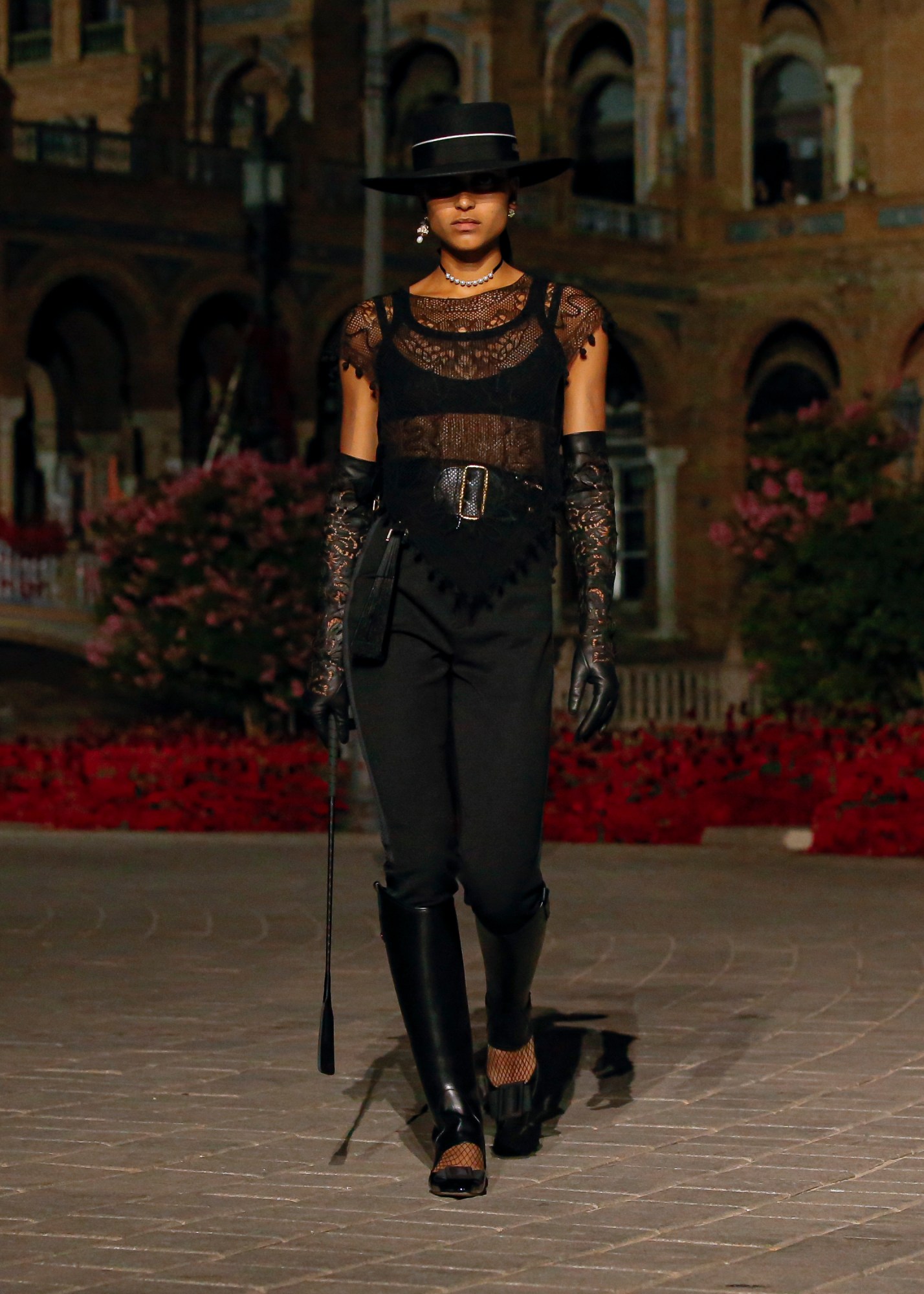
Tradition is certainly a big thing in Seville. Earlier on the day of the show, despite the punishing heat, the streets of the city were flooded with its inhabitants in full regalia for the annual Feast of Corpus Christi. Men wore traditional suits, women wore their Sunday Best dresses — and the whole city came together to celebrate the ancient religious rituals, dressing up Madonna statuettes in embroidered clothes worthy of Paris haute couture ateliers. In fact, ever the one to search the globe for local craftspeople, Maria Grazia was so blown away by the silver and gold embroiderers in Seville that she invited them — along with hat-makers, metalworkers, fan-makers and shawl-weavers — to work on pieces in the show. Many of the embroiderers, she explained, have survived because of the patronage of the church and its dressed statues — and the result of which was modern-day Madonnas, Catholic symbols reimagined as secularly fabulous Mediterranean divas.
The collection was purposefully nostalgic, given that contemporary Spanish fashion is hardly distinctive. “There is not really a ‘street style’ here,” observes Maria Grazia. “You don’t see people going to the festivals in jeans and T-shirts, and clothes are used as an expression of Spanish culture, almost like a part of the country’s history. They are more formal and traditional.” Hence, so was her collection, albeit with a handful of Dior-monogrammed bombers and indigo denim ensembles.

During her tenure at Dior, beside her cause célèbre of spotlight capital-F feminism, Maria Grazia’s predominant mission has been to modernise the traditions of Dior. If she were a matadora, the Bar jacket would be her bull. She has repeatedly sought to modernise and soften the wasp-waisted, corseted symbol of post-war femininity; to make it more wearable, and even at times, completely unrecognisable as a biker-inspired moto jacket or even an orthopaedic structural support. Her job has been to take the once-restrictive dress codes of old-school femininity and transpose them through the heritage of Dior — and in this case, through the archetypes of Spain. In terms of a country’s sartorial output, it couldn’t be further from the nation’s modern-day reality of mass market ready-to-wear, a truly global celebration of Spain’s unsung sartorial heritage. To which we say: Olé!
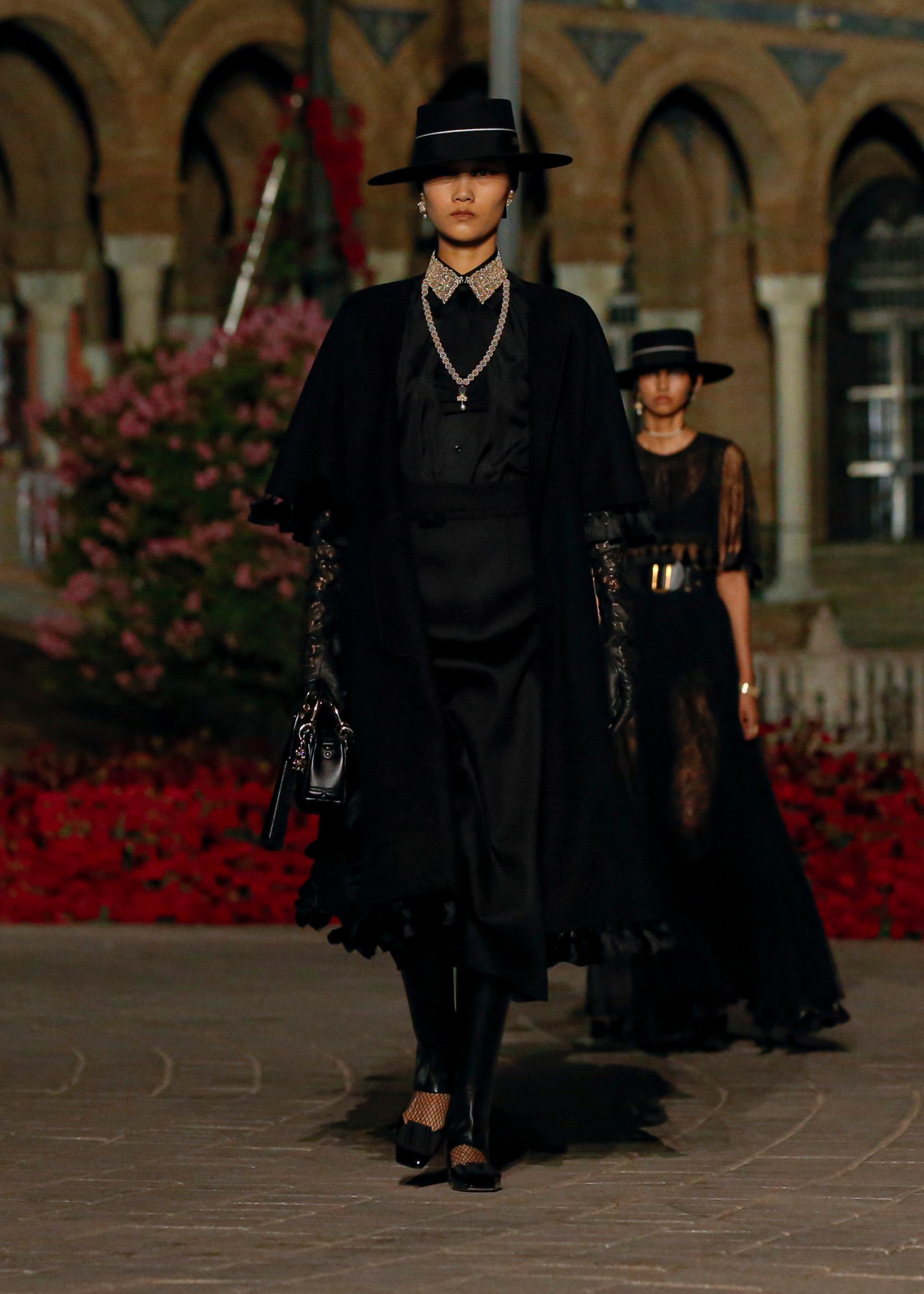
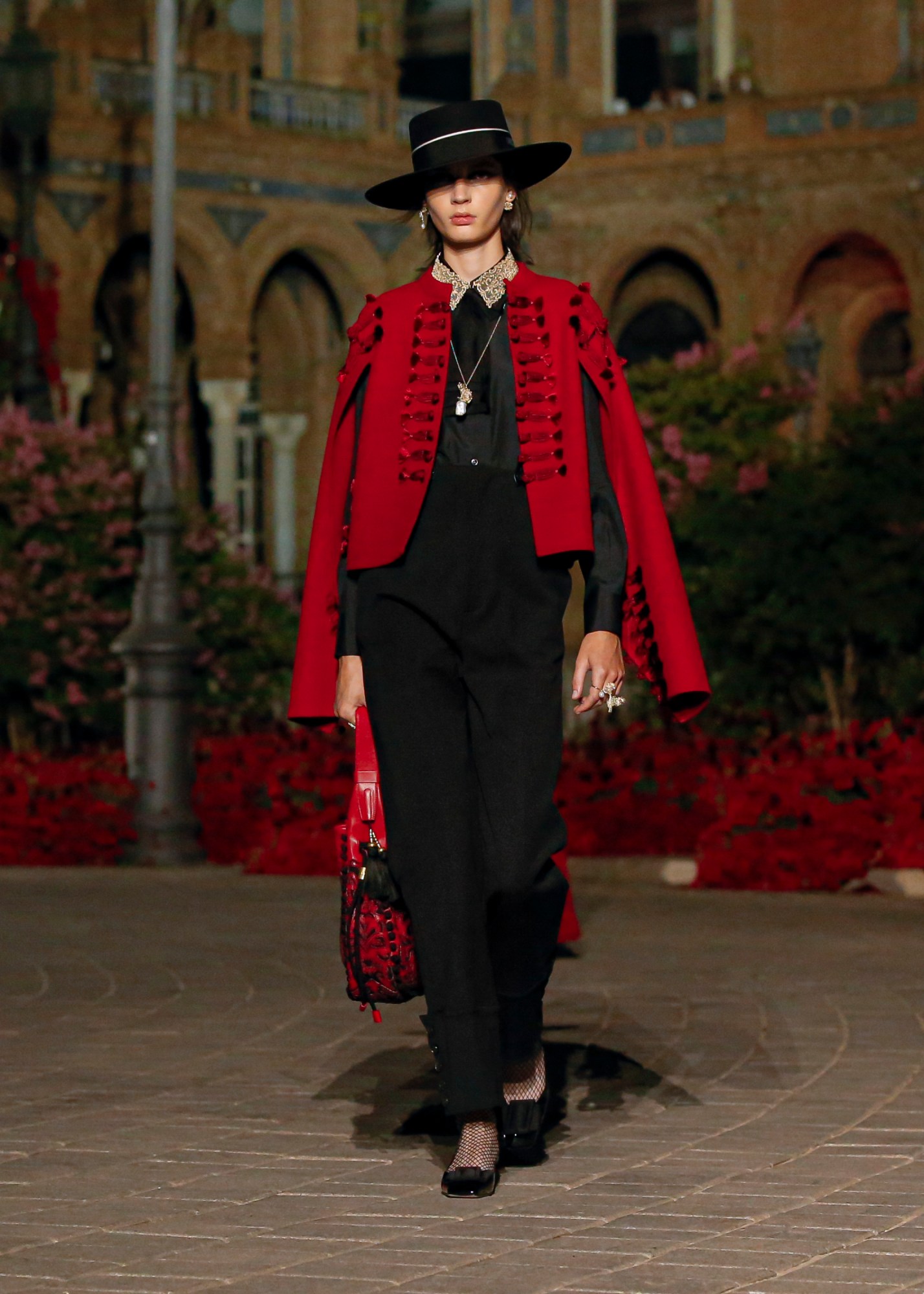
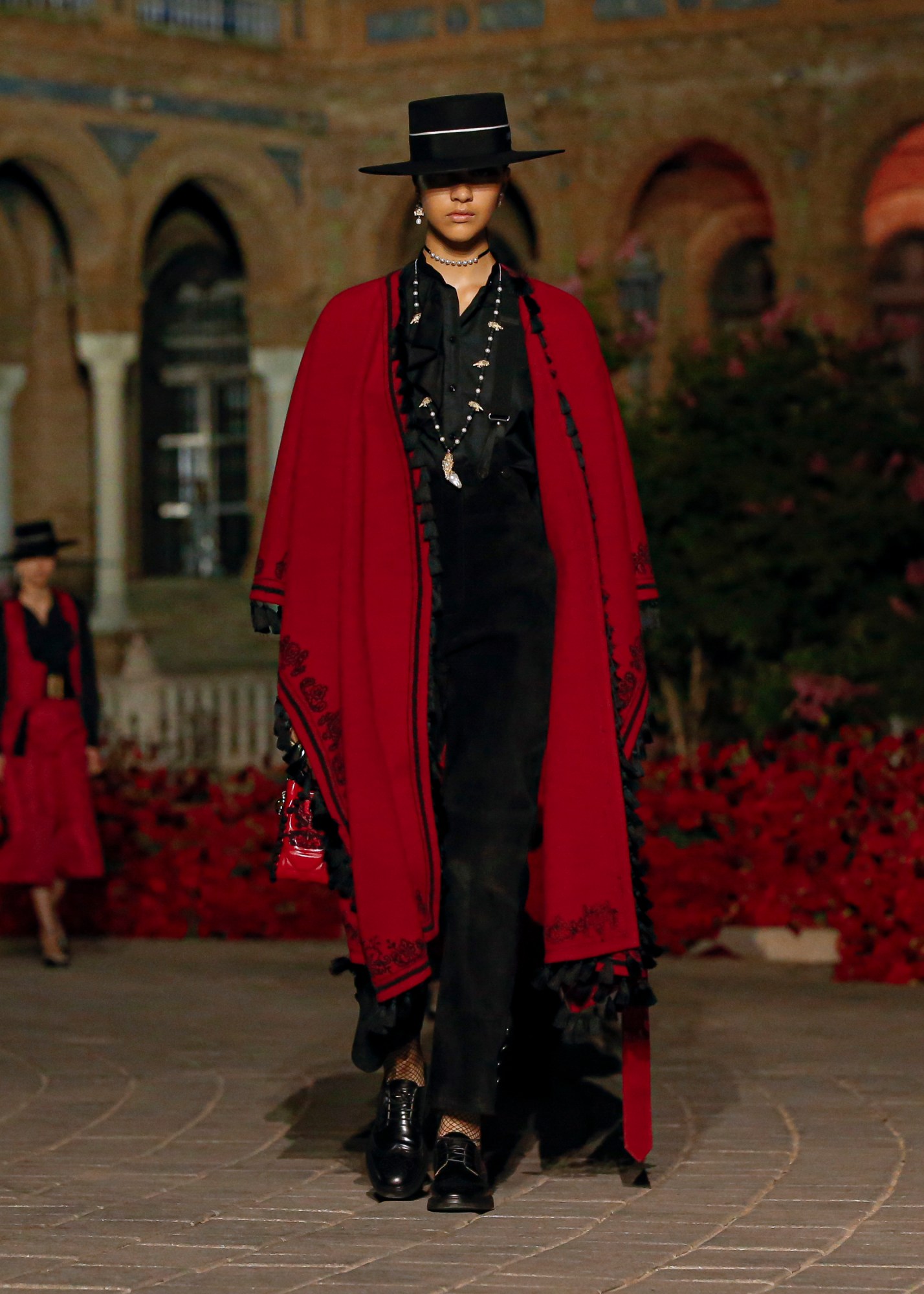
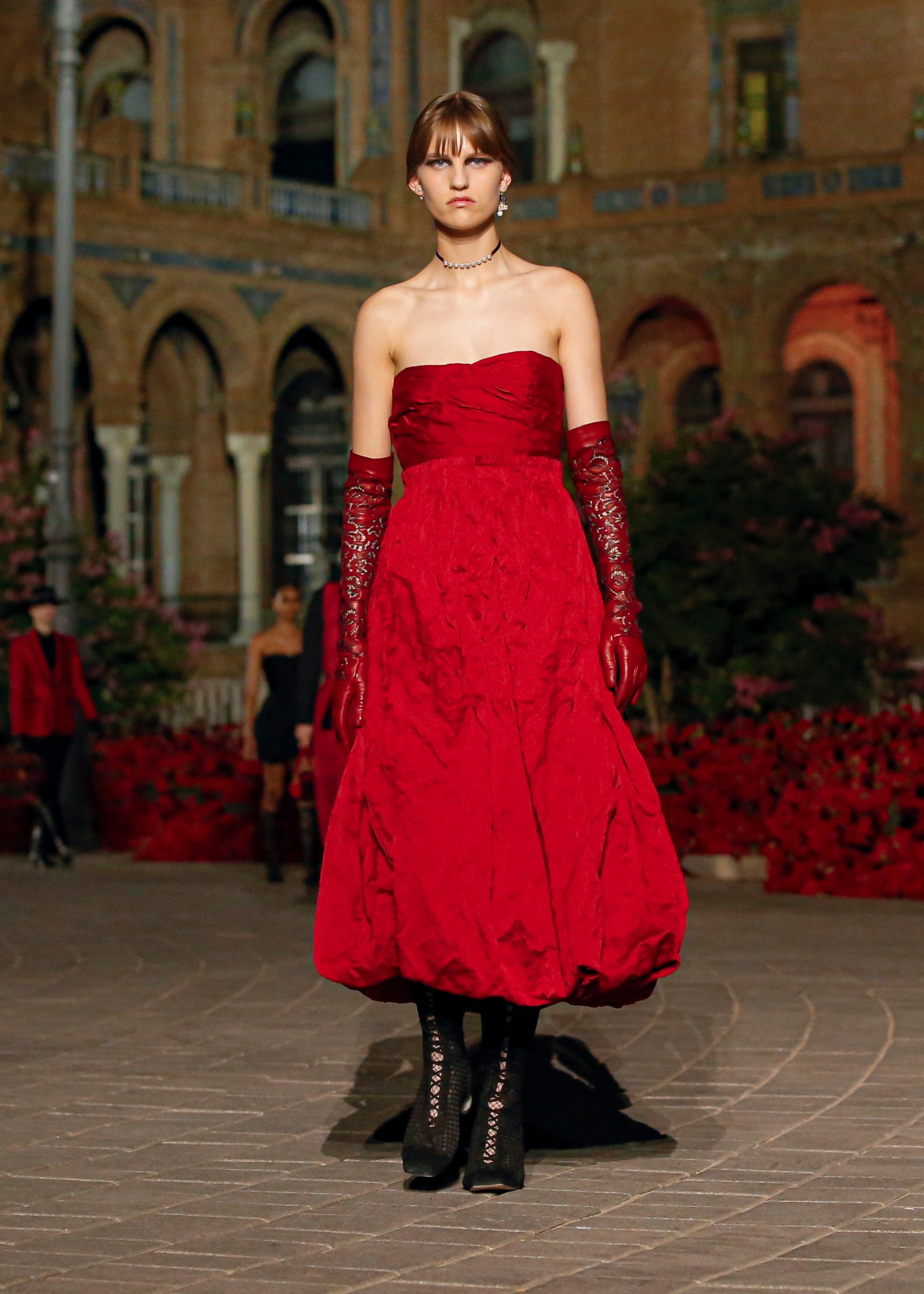
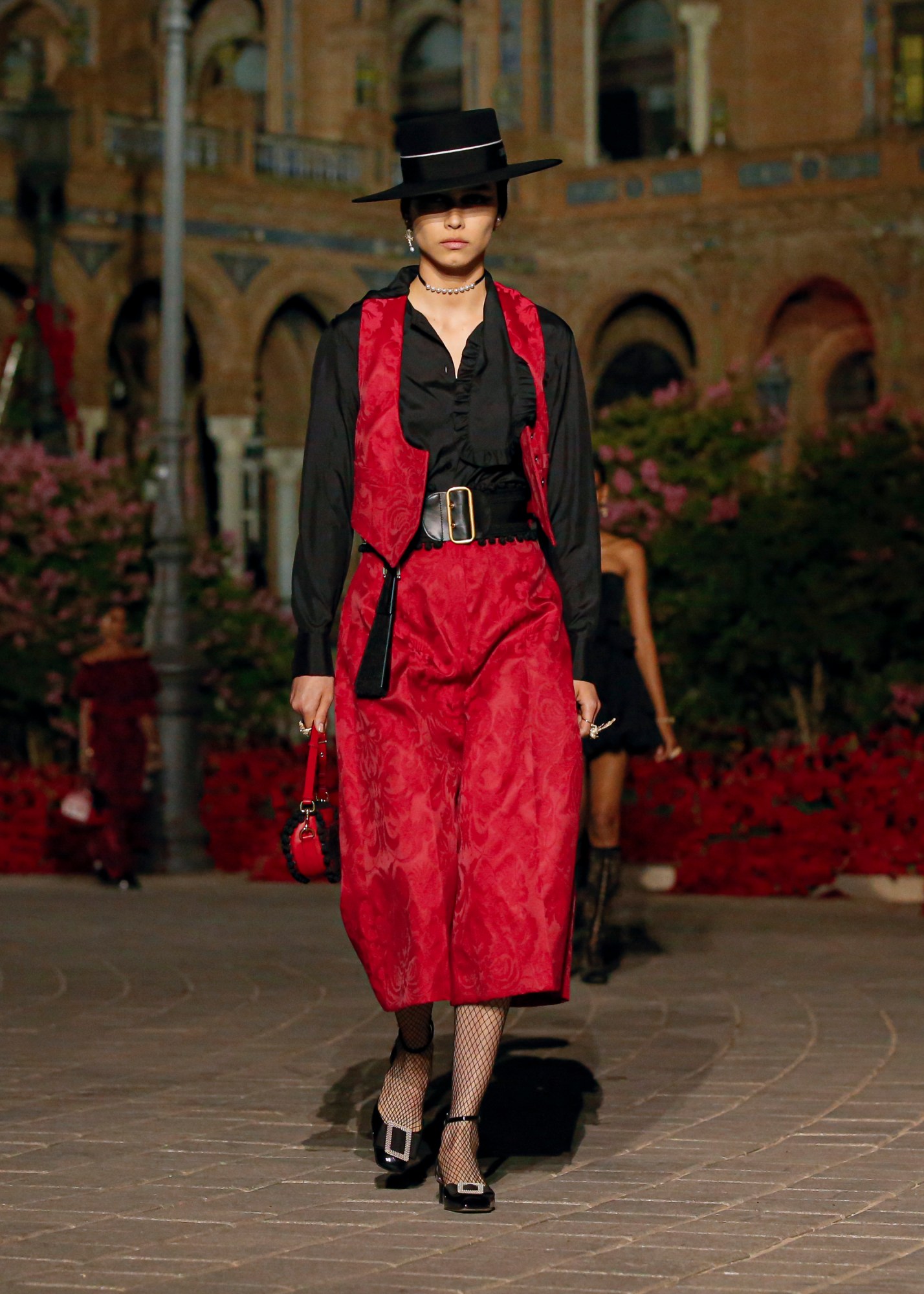
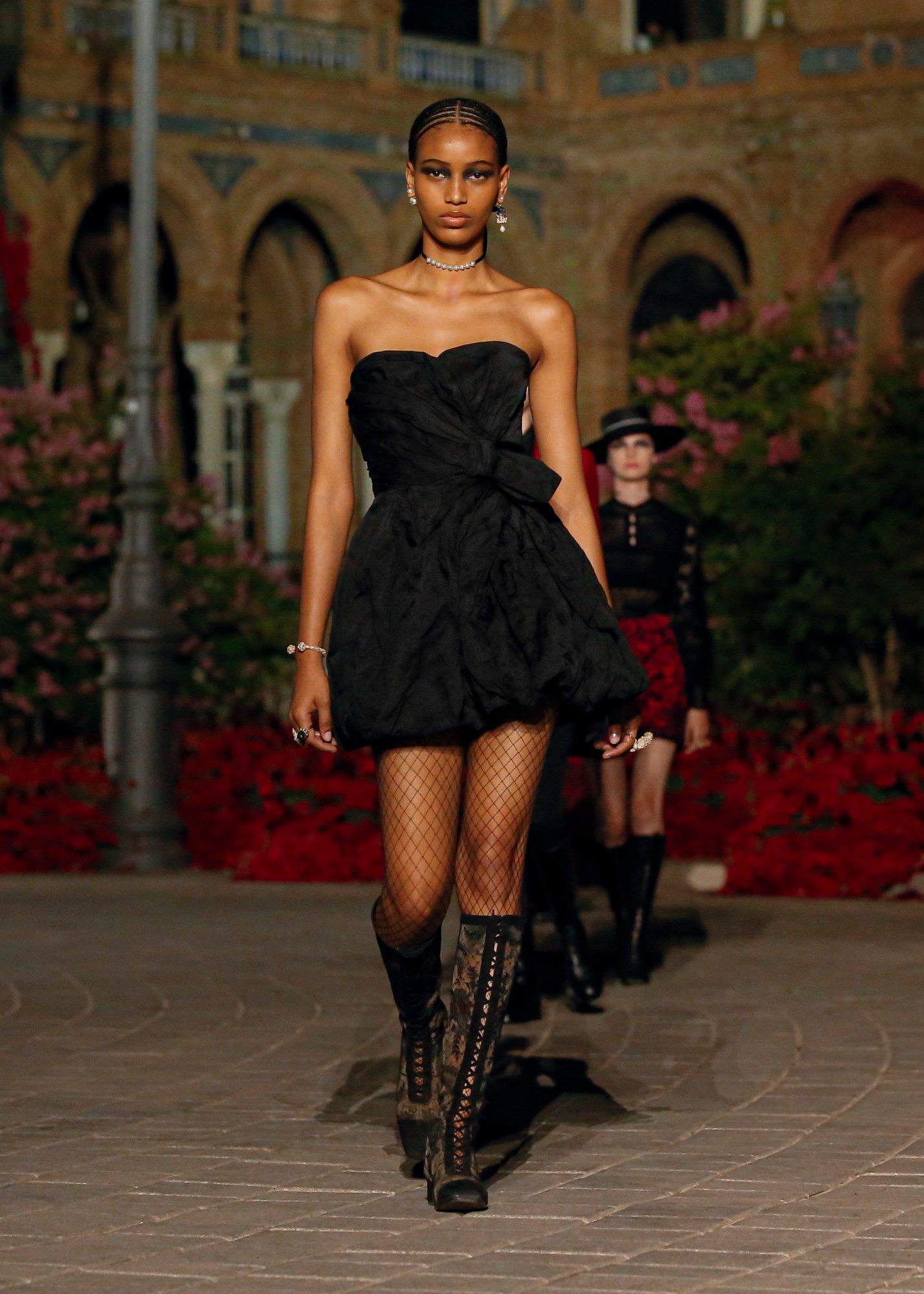

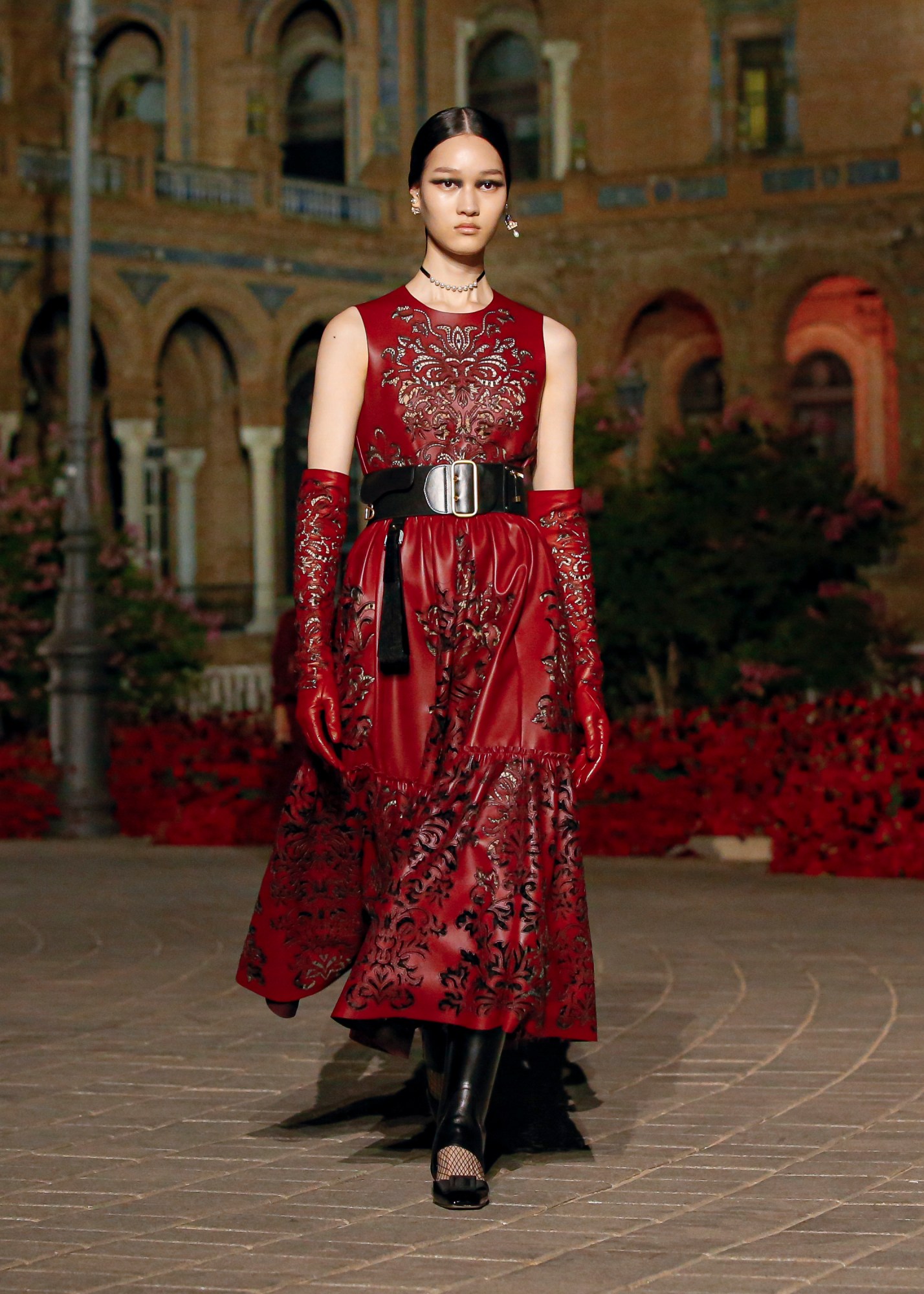


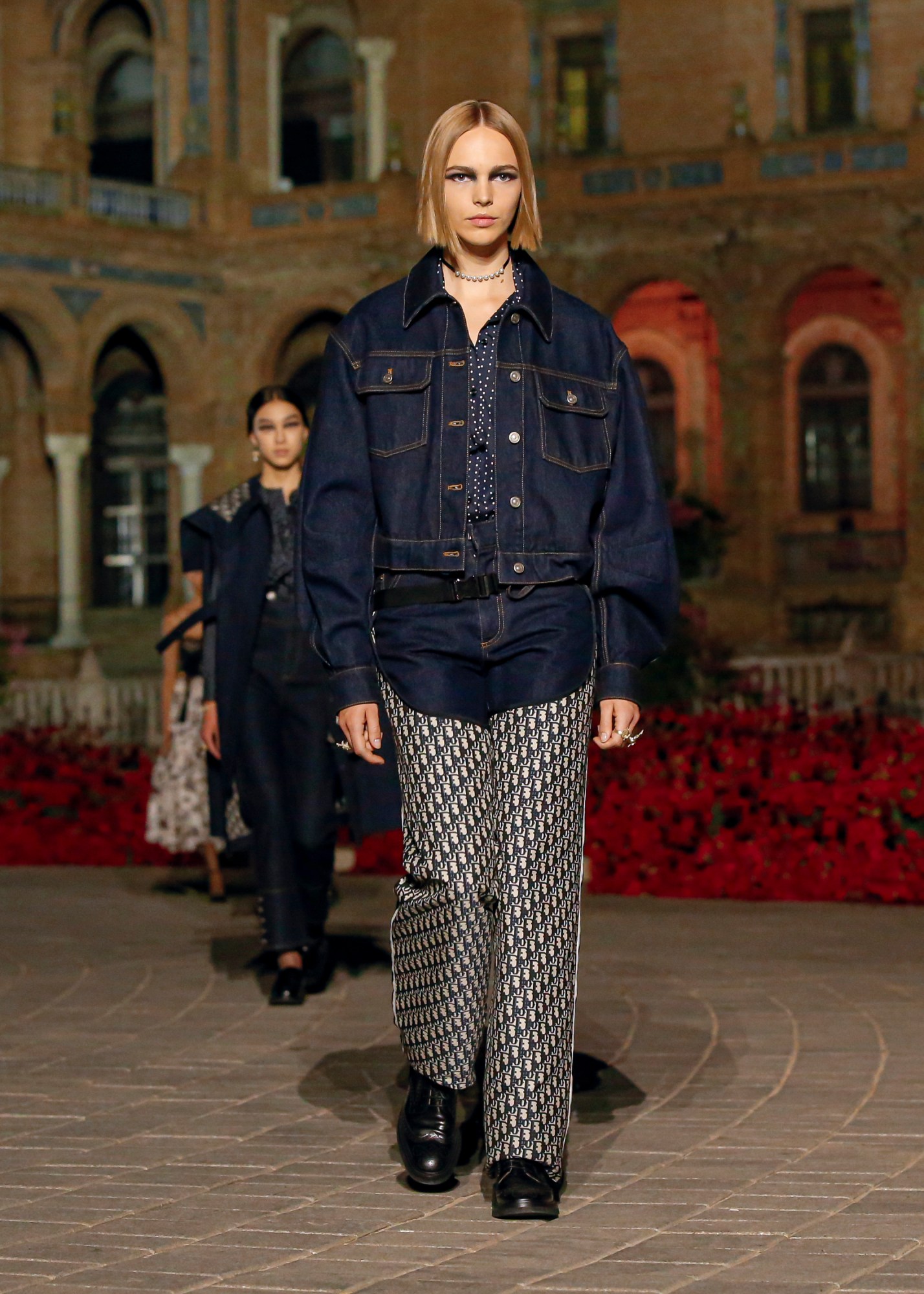
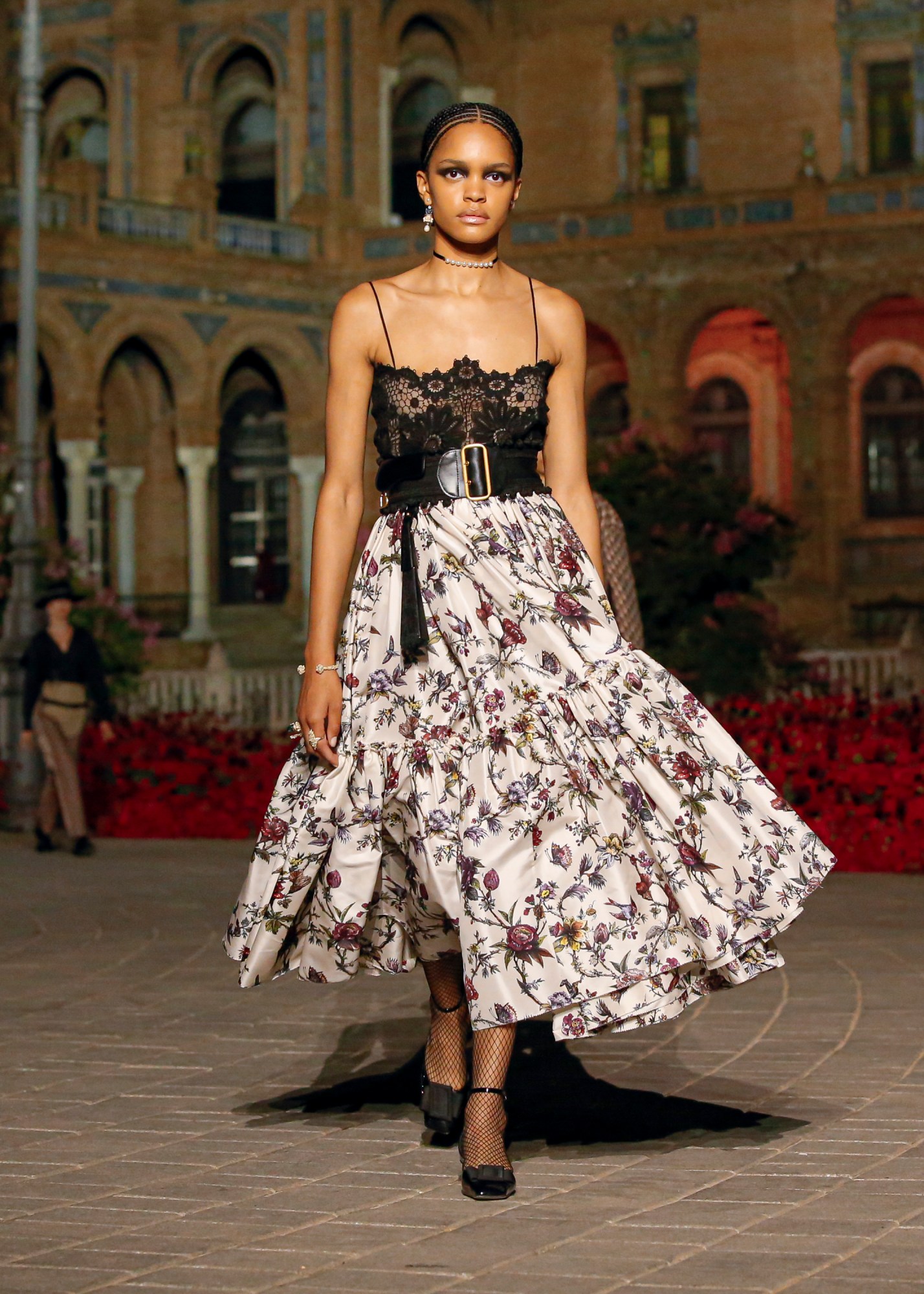




Follow i-D on Instagram and TikTok for more on the Cruise 2023 shows.
Credits
All images courtesy of Dior
